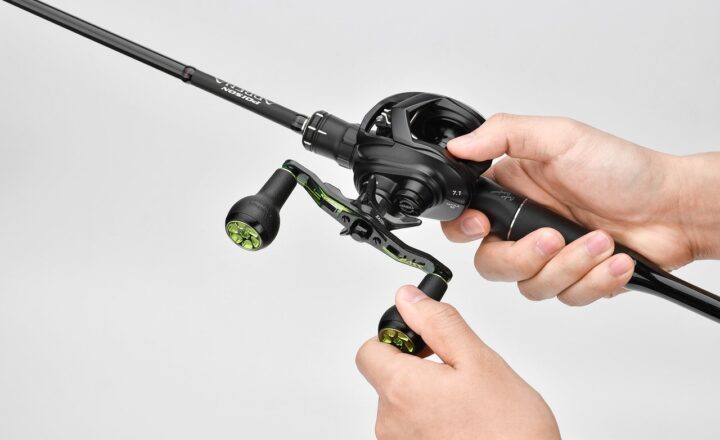The Fascinating Science of Fish Migration and Spawning
November 11, 2024

Fish migration and spawning are two of nature’s most astonishing phenomena that capture the imagination of scientists and enthusiasts alike. These processes not only showcase the incredible adaptability of fish but also play a crucial role in maintaining aquatic ecosystems. In this article, we will dive deep into the science behind fish migration and spawning, exploring why they occur, the challenges faced by fish, and their impact on the environment.
1. Understanding Fish Migration
Migration is a behavioral pattern exhibited by many species of fish, characterized by their seasonal movement from one habitat to another in search of food, spawning grounds, or favorable environmental conditions. Fish migration can generally be categorized into two types:
– Spatial Migration: This involves moving from one geographical area to another. This type of migration often occurs with species that travel long distances, such as salmon that swim from the ocean back to freshwater rivers to spawn.
– Temporal Migration: Refers to movements that occur at specific times of the year, often linked to seasonal changes, such as water temperature and food availability.
Fish migration is essential for various reasons:
– Reproduction: Many fish migrate to breed in protected environments where their young will have a higher chance of survival.
– Feeding Grounds: As seasons change, fish may travel to areas with abundant food resources.
– Predator Evasion: Migration can also help fish escape predators by shifting to less accessible habitats.
2. The Spawning Process
Spawning is the reproduction process in fish, where females release eggs, and males fertilize them. This process is often synchronized with specific environmental cues, such as water temperature and moon phases. Spawning usually takes place in safe areas with adequate cover, such as shallow reefs, submerged vegetation, or riverbeds, providing protection for the eggs and hatchlings.
The fertilization process can be divided into two main types:
– External Fertilization: Most fish, including the common salmon and herring, participate in external fertilization, where males and females release their gametes into the water column simultaneously. This method requires large numbers of eggs to increase the likelihood of offspring survival due to predators.
– Internal Fertilization: Some species, like certain sharks and guppies, use internal fertilization, where the male transfers sperm directly to the female’s body. This method generally results in fewer eggs but offers a greater chance of survival for the young.
3. Factors Influencing Migration and Spawning
Several factors can influence fish migration and spawning behaviors:
– Water Temperature: Many fish species require specific temperature ranges for optimal spawning. Warmer waters can trigger spawning events in some species, while others may prefer cooler, more stable conditions.
– Light Cycles: The length of daylight, regulated by the seasons, can influence fish migration patterns. Longer days often signal the time for spawning activities.
– Tidal Changes: For species that migrate to spawn in coastal areas, tidal changes can be vital in ensuring successful reproduction by providing access to specific habitats.
– Environmental Conditions: Water quality, nutrient abundance, and habitat disruptions can significantly alter migrations. Polluted environments, for example, may deter fish from returning to traditional spawning grounds.
4. Challenges Faced by Migrating Fish
Fish migration is not without its challenges. Many species face significant obstacles during their journeys, including:
– Habitat Loss: Urban development, dam construction, and agriculture can obstruct traditional migration routes, making it difficult for fish to reach spawning grounds.
– Climate Change: Alterations in climate patterns affect water temperature, rivers’ water flow, and the availability of food, all of which can interfere with successful migration and spawning cycles.
– Overfishing: Unsustainable fishing practices can deplete fish populations, impacting their ability to reproduce effectively.
– Predation and Competition: As fish migrate, they may encounter predators or compete with other species for resources, further complicating their journeys.
Understanding these challenges is crucial for conservation efforts, as restoring migration paths and habitat quality is vital to ensuring fish populations thrive.
5. The Role of Technology in Studying Fish Migration
Advancements in technology have improved our understanding of fish migration patterns. Researchers now use various tools to study the behavior and ecology of migratory fish:
– Acoustic Tagging: Small transmitters are implanted in fish to track their movements in real-time. This technology allows scientists to monitor migration routes and behaviors in detail.
– Remote Sensing: Satellite tracking and sonar technology help researchers collect critical data about fish locations, depth preferences, and habitat use.
– Genetic Analysis: By analyzing the genetic makeup of different fish populations, scientists can determine migration connectivity and patterns between various spawning populations.
These technologies are vital for conservation efforts, allowing experts to identify critical habitats, ensure sustainable fishing practices, and implement effective policies to protect migratory fish species.
6. Conclusion: Resilience of Fish Migration and Spawning
Fish migration and spawning demonstrate nature’s resilience and adaptability. Despite the numerous challenges these creatures face, their instinct to return to spawning grounds and continue their life cycle remains strong. Protecting migratory fish habitats and ensuring sustainable practices is crucial for maintaining healthy aquatic ecosystems.
By understanding the science behind fish migration and spawning, we can foster awareness and encourage conservation efforts to protect these fascinating organisms and the environments they inhabit. Together, we can help ensure future generations continue to enjoy the spectacle of fish migrations and witness the beauty of nature’s intricate reproductive strategies.








